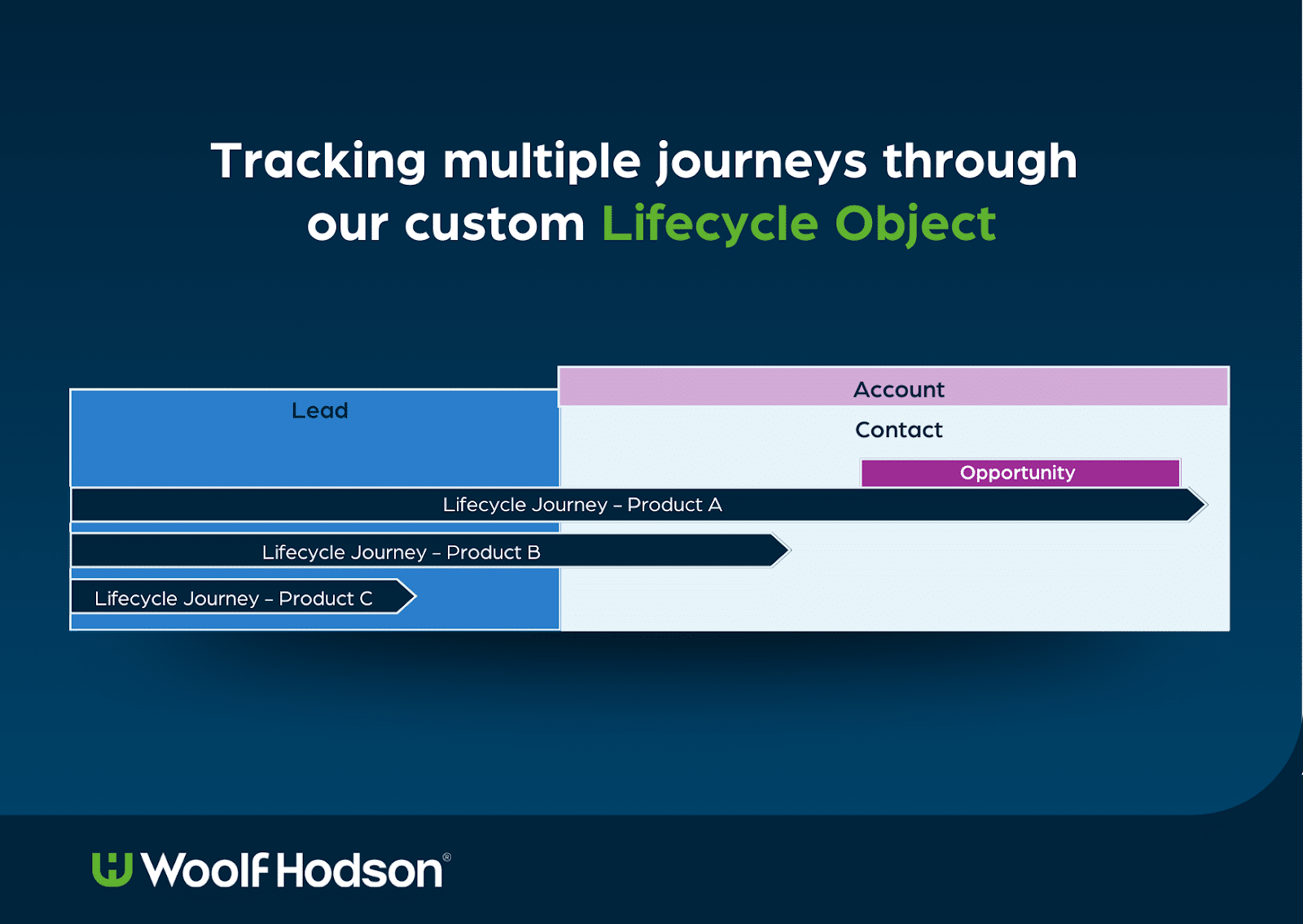
Managing a customer’s experience throughout their complex journey is challenging. Interests and behaviors do not work in straight lines, and too often, the “insights” we capture are out of date before we share them. With customers demanding ever-more relevant and timely interventions, marketing teams are simply losing the connection.
The problem: When traditional approaches fall short
Traditional campaign influence makes it difficult to explain the nuances of how marketing impacts contacts and leads as they progress through different stages of their journeys. Rigid data structures hinder the agile analysis of marketing performance and severely limit marketing’s ability to track engagement across multiple lifecycles simultaneously.
This results in incomplete data, missed marketing insights and a struggle to demonstrate the value of marketing efforts. Key challenges include:
- Operational inefficiencies: Manual efforts and disparate systems lead to wasted time and resources when connecting data from different lead journeys.
- Fragmented workflows: Lack of integration between marketing and sales creates data silos and gaps. These become more problematic with complex customer behaviors.
- Inconsistent data inputs: Varying data collection methods and rigid structures make it difficult to create a unified view of customer interactions across multiple lifecycles.
- Lack of a 360-degree view: This hinders effective customer engagement optimization across all touchpoints, from campaign engagement to business outcomes and reporting.
The solution: A holistic framework for lifecycle management
We established a framework that moves beyond traditional limitations, integrating components designed to provide clarity and control over every stage of the lead lifecycle.
1. Multi-journey tracking
Standard lifecycle tracking relies on a single status field, which creates a rigid, one-way view of lead progression. However, buyers frequently engage with multiple products and campaigns and revisit various stages of the process numerous times. Without comprehensive historical data, marketing teams miss valuable insights and the ability to conduct meaningful trend analysis.
By creating a custom object, the lifecycle object, campaigns, leads, contacts, accounts and opportunities are brought together in a single framework to enable multi-journey tracking. That makes it possible to:
- Capture interest and interaction at every stage of the customer lifecycle across multiple products or business units.
- Gain a comprehensive view, ensuring the accumulation of rich historical data.
The result is deeper analysis, more accurate reporting, and the ability to understand and optimize every step of the customer journey, from lead to opportunity to close.

2. Linking to business outcomes
Effective data linkage between a “lead” and an “opportunity” too often relies on sales teams adding relevant “connector” information. However, they are, understandably, frequently reluctant to add extra steps to their already demanding workflows.
Even when fully committed, sales teams can only tag campaigns and individuals they know. That inevitably leads to incomplete data and missed marketing insights.
To close the gap between marketing engagement and measurable business outcomes, we’ve developed:
- OppMatch automatically connects marketing-engaged individuals to opportunities using custom rulesets, ensuring accurate attribution without requiring manual effort.
- LeadMatch instantly links new leads to known accounts upon creation, eliminating data gaps and strengthening your pipeline.
In addition, our custom UI enhancements within Salesforce ensure sales teams get relevant insights in a manageable and actionable format. These solutions drive better collaboration between sales and marketing teams, ensuring less time on administrative tasks and more time actively driving revenue.
3. Automated 360 reporting
Salesforce’s standard campaign influence often operates like a “black box.” That makes its reported numbers difficult to explain and leaves reports vulnerable to scrutiny. Such opacity can undermine confidence in marketing’s contributions.
We move beyond this limitation by covering more lifecycle stages and considering a wider range of asset influences. Critically, we demystify the data. Every attribution point can be explained and drilled into, providing the confidence to stand firmly behind your numbers. This process also significantly enhances trust with your teams and stakeholders.

Dig deeper: How smarter campaign modeling and automation drive real marketing ROI
Case study: How a global technology brand transformed its reporting clarity
The challenges outlined above are not theoretical. They’re a daily reality for many organizations. One global technology brand, for example, struggled to determine the impact of specific marketing efforts on revenue confidently. Despite heavy investment in technology, achieving reliable, actionable reporting remained elusive.
To address this, we began by mapping their data flows — from initial capture through processing to final storage — documenting every platform involved. That revealed systemic issues: broken data connections, widespread duplication and inconsistent data structures that prevented a unified view. Reporting had become a manual, time-consuming effort that involved stitching together disconnected sources.
We responded with a comprehensive system map to streamline platform roles, identify redundancies and guide consistent data capture across profile and behavioral dimensions. Relevant insights were surfaced within their reporting platform to support automation and clarity. As a result, the organization moved from uncertainty to confidence, finally demonstrating the true impact of its marketing efforts.
The impact: Building operational effectiveness
Managing the complexity of multiple lifecycles means moving beyond traditional limitations. This requires:
- Robust multi-journey tracking.
- Advanced campaign structures.
- Seamless linkage to business outcomes.
- Automated 360-degree reporting.
Together, these components form an integrated methodology that replaces traditional influence models’ “black box” with transparency, comprehensive data capture, and actionable insights at every stage. The result is more than operational efficiency. It’s the confidence to:
- Stand behind your numbers.
- Optimize engagement across all lifecycles.
- Drive measurable revenue growth.
Dig deeper: How advanced customer journey analytics is shaping the future of engagement
The post Turn disconnected insights into action with a lifecycle-driven strategy appeared first on MarTech.
